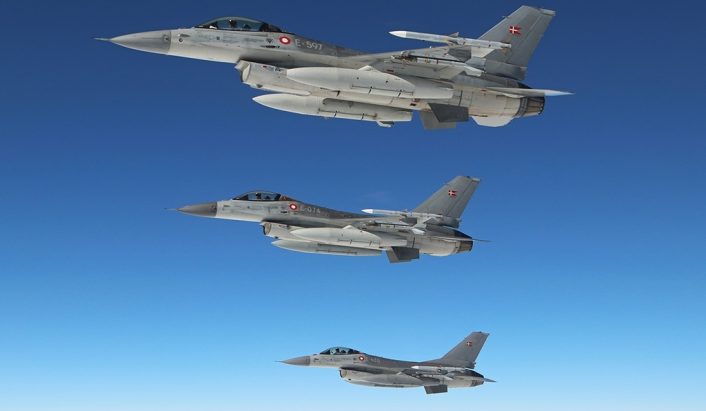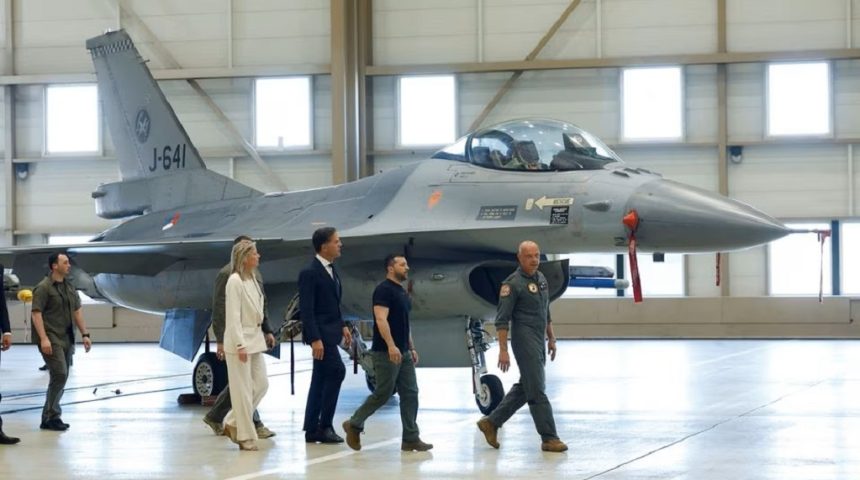Here is what we know so far about the F-16s that will be donated to Ukraine, the training of pilots and maintainers and the timeline of the deliveries.
In the last few days, we witnessed a media frenzy around over the donation of F-16s to Ukraine to help the country repel the Russian invasion that has been going on since February 2022. In fact, during a visit by Ukrainian President Volodomyr Zelenskiy on August 20, 2023, the Netherlands and Denmark announced they will supply F-16 fighter jets to Ukraine.
Ukraine has long sought the US-made fighters to achieve the air superiority against the Russians during the counter offensive. This has been one of the hot topics for about one year now however, more often than not, news about this were unsubstantiated or just rumors. Now, the transfer has been made official, although details were scarce. More details emerged in the following days, but let’s proceed with order.
On August 17, the United States approved the transfer of the F-16s from Denmark and the Netherlands to Ukraine as soon as pilot training is completed. The Danish defense ministry confirmed that the training would start this month in Denmark, run by a coalition of 11 countries. A month ago, Denmark said that the first results of the training are expected in early 2024, and this was also confirmed by Ukrainian Air Force spokesperson Yuriy Ihnat who said in an interview that the country would not operate F-16s this coming autumn and winter.
F-16s will instill fresh confidence and motivation in both warriors and ordinary citizens. They will produce fresh results for Ukraine and the rest of Europe.
I thank you once again, dear @MinPres Mark, @Statsmin Mette, your teams, and the peoples of the Netherlands and Denmark. pic.twitter.com/ffSdtMHkfI
— Володимир Зеленський (@ZelenskyyUa) August 20, 2023
On August 18, Gen. James B. Hecker, commander of U.S. Air Forces Europe and Air Forces-Africa, also confirmed Ukraine won’t get a basic F-16 capability until at least 2024. The General also warned that the F-16s won’t be a “silver bullet” and it will take years to build proficiency for pilots and maintainers. “What the F-16 will give them is, it’s going to be more interoperable with the current weapons that we’re giving them now,” said Gen. Hecker. “Right now, weapons that we’re giving them have to be adapted to go on the MiG-29 or go on the Su-27, or something like that.”
On August 19, Zelenskiy visited Sweden, where the possibility of transferring some of the country’s Gripen fighters has been discussed. Sweden previously said it would allow Ukrainian pilots to test the Gripen, but the aircraft are still needed to protect Swedish territory. On the same day, Ukrainian defence minister Oleksiy Reznikov said that training of Ukrainian F-16s pilot had begun and it will take at least six months to complete, while it’s not known how long it would take to train engineers and mechanics.
The minister didn’t give details about the location of the training, and the few details emerged later are not very clear. Officials of the 11-country coalition said that training will be conducted in Denmark and Romania. General Mykola Oleshchuk, Commander of the Ukrainian Air Force, said that pilots of the class of 2016, who have already combat experience, are being trained in Sweden, while pilot of the class of 2023, are being trained in the UK. The latter should be the ones mentioned by Gen. Hecker, who said that the cadre undergoing training on the F-16 is very junior and with “barely have any hours at all.”

Currently, it appears that only eight of the pilots selected are sufficiently proficient in English to begin training, while others are undergoing English language training in the UK. This was confirmed by both Gen. Hecker and minister Reznikov. Gen. Hecker also mentioned that the pilots, after the language training, ”are going to get a little bit more training on propellers, and then go down to France and fly in the Alpha Jet for a little bit.“
On August 20, as we mentioned in the opening of the article, the Netherlands and Denmark announced the transfer of their F-16s, that are in the process of being replaced by the F-35, to Ukraine. Danish Prime Minister Mette Frederiksen said that Denmark will transfer 19 of their 43 F-16s, with the first six due to be delivered around new year, followed by eight in 2024 and five in 2025. As for the Netherlands, Dutch Prime Minister Mark Rutte said the country has 42 F-16s available but has yet to decide whether all of them will be donated.
On August 21, president Zelenskiy said after meeting Greek Prime Minister Kyriakos Mitsotakis that Greece will also take part in training of Ukrainian F-16 pilots. On the same day, he also visited Denmark to thank the country for its donation, saying that the promised deliveries of F-16s made him confident Ukraine could end Russia’s invasion. Danish Defence Minister Jakob Ellemann-Jensen pointed out that the F-16s are to be used only within Ukrainian territory: “We donate weapons under the condition that they are used to drive the enemy out of the territory of Ukraine. And no further than that. Those are the conditions, whether it’s tanks, fighter planes or something else.”
Finally, on August 22, the Danish armed forces announced that the training of the first six Ukrainian F-16 pilots has begun. The pilots arrived at Skrydstrup air base along with 65 personnel who will be trained in maintaining and servicing the jets. No other details were provided about the length of the training. Based on the previously released info by Denmark and other officials, the first pilots are expected to graduate in early 2024 after at least six months of training. This means that we should expect to see Ukrainian pilots flying F-16s over Ukraine not earlier than February 2024, although they will have only a limited combat readiness and much will remain to be seen.









